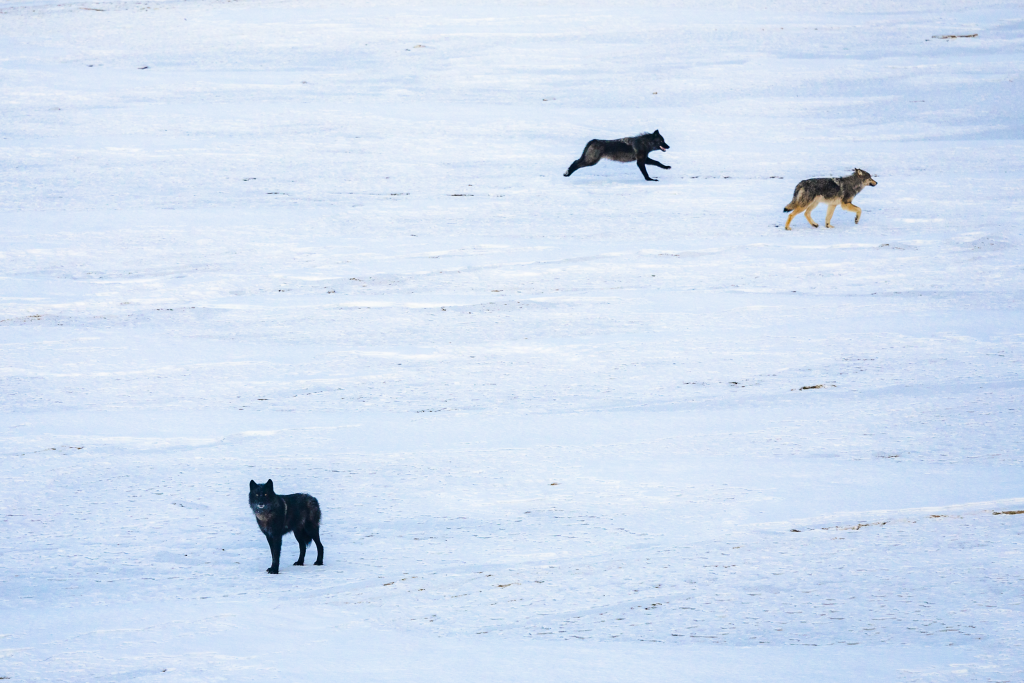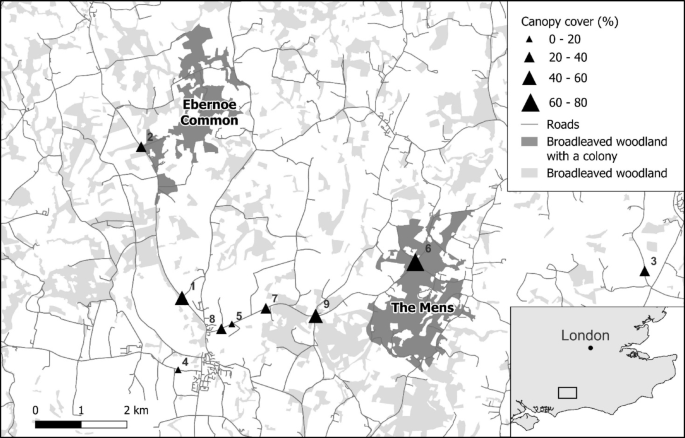Report on Colorado Wolf Reintroduction and Sustainable Development Goal Implications
1.0 Introduction: A Case Study in Sustainable Development Conflicts
A recent legal inquiry initiated by Colorado livestock associations into the state’s gray wolf reintroduction program highlights a significant conflict between several key United Nations Sustainable Development Goals (SDGs). The program, managed by Colorado Parks and Wildlife (CPW), involves the importation of wolves from Canada, an action intended to advance SDG 15: Life on Land by restoring a keystone species and enhancing biodiversity. However, the challenge from agricultural stakeholders underscores concerns related to SDG 2: Zero Hunger and SDG 8: Decent Work and Economic Growth, as it pertains to the protection of livestock and rural livelihoods. The dispute itself invokes SDG 16: Peace, Justice and Strong Institutions, as it questions the legal frameworks and institutional accountability governing the reintroduction process.
2.0 Analysis of the Core Dispute: Institutional Accountability and Legal Compliance
The central issue revolves around the adherence of state actions to federal and international conservation laws. Livestock associations have formally questioned whether CPW’s importation of 15 gray wolves from Canada complied with established legal mandates, thereby scrutinizing the effectiveness and transparency of governmental institutions as outlined in SDG 16.
2.1 Allegations from Stakeholder Associations
A coalition of livestock and conservation groups has raised formal concerns, alleging that the wolf importation may have violated key statutes. Their claims center on the following points:
- Violation of the Endangered Species Act (ESA): The associations contend that Section 9 of the ESA, which prohibits the importation of endangered species without specific federal authorization, was not followed.
- Lack of Federal Permitting: It is alleged that CPW required a permit from the U.S. Fish and Wildlife Service (USFWS) for the cross-border transfer, which may not have been secured.
- Violation of Inter-Agency Agreements: The letters claim that CPW may have breached its memorandum of agreement with the USFWS by importing wolves from another country.
2.2 Response from Colorado Parks and Wildlife
In defense of its program, CPW maintains that its actions align with legal requirements and contribute directly to the targets of SDG 15. The agency’s position is based on the following rationale:
- Legal Status of Wolf Populations: CPW asserts that because gray wolves in western Canada and the Northern Rocky Mountains are not listed under the U.S. Endangered Species Act, the import prohibitions of the act do not apply to these specific populations.
- Inter-Agency Coordination: The agency states it has coordinated extensively with the USFWS throughout the process, exemplifying the collaborative approach promoted by SDG 17: Partnerships for the Goals.
3.0 Stakeholder Demands and Implications for SDG 16
The livestock associations are leveraging legal and administrative channels to demand transparency and accountability from federal institutions, a core principle of SDG 16. Their formal requests to the USFWS seek to ensure that conservation efforts are implemented justly and within the rule of law.
3.1 Formal Requests Submitted to USFWS
The letters submitted by the associations request that the USFWS take the following actions:
- Confirm in writing whether a valid federal permit was issued to CPW for the importation of gray wolves from Canada.
- Provide a legal rationale clarifying the standing of the imported wolves if no permit was issued.
- Initiate corrective measures to ensure all future relocations comply strictly with the Endangered Species Act.
- Consider amending or suspending the memorandum of agreement with CPW until full compliance is demonstrated.
This course of action represents a critical test of institutional responsiveness and the ability of governance structures to mediate conflicts between environmental objectives (SDG 15) and socio-economic interests (SDG 2, SDG 8), ultimately reinforcing the framework for justice and strong institutions (SDG 16).
Analysis of Sustainable Development Goals in the Article
1. Which SDGs are addressed or connected to the issues highlighted in the article?
- SDG 15: Life on Land: This goal is central to the article, which focuses on the reintroduction of a keystone species (gray wolves) into an ecosystem. The entire conflict revolves around the management of terrestrial wildlife, the protection of biodiversity, and the restoration of natural habitats. The article discusses the conservation status of gray wolves and the legal frameworks designed to protect species, directly aligning with the aims of SDG 15.
- SDG 16: Peace, Justice and Strong Institutions: The article highlights a legal dispute between livestock associations and a state wildlife agency (Colorado Parks and Wildlife). The associations are using legal channels and demanding accountability by questioning whether the agency complied with national laws (the Endangered Species Act) and international agreements (Convention on International Trade in Endangered Species of Wild Fauna and Flora). This demonstrates the functioning of institutions and the use of the rule of law to resolve conflicts, which is a core component of SDG 16.
- SDG 17: Partnerships for the Goals: The issue involves coordination and potential conflict between multiple stakeholders: a state agency (CPW), a federal agency (U.S. Fish and Wildlife Service), international partners (Canada, from where the wolves were sourced), and civil society organizations (the various livestock associations). The article mentions a “memorandum of agreement” between the state and federal agencies, highlighting the importance of partnerships for implementing conservation policies. The dispute itself underscores the challenges in maintaining policy coherence and effective partnerships among different levels of government and stakeholders.
2. What specific targets under those SDGs can be identified based on the article’s content?
- Target 15.5: “Take urgent and significant action to reduce the degradation of natural habitats, halt the loss of biodiversity and, by 2020, protect and prevent the extinction of threatened species.” The act of reintroducing 15 gray wolves into Colorado is a direct and significant action aimed at restoring a native species and enhancing the biodiversity of the ecosystem.
- Target 15.7: “Take urgent action to end poaching and trafficking of protected species of flora and fauna and address both demand and supply of illegal wildlife products.” The legal debate over whether the importation of wolves required a federal permit under the Endangered Species Act and CITES relates directly to the regulation of trade and movement of wildlife to prevent illegal activities. The livestock associations are essentially questioning the legality of the wildlife transfer.
- Target 16.3: “Promote the rule of law at the national and international levels and ensure equal access to justice for all.” The livestock associations are exercising their right to access justice by formally questioning the government’s actions and demanding that the U.S. Fish and Wildlife Service enforce federal laws like the Endangered Species Act. Their letters are an attempt to promote the rule of law.
- Target 16.6: “Develop effective, accountable and transparent institutions at all levels.” The associations’ request for records and written confirmation from the U.S. Fish and Wildlife Service is a direct call for transparency and accountability from government institutions (both CPW and the FWS) regarding their procedures and legal justifications.
- Target 17.14: “Enhance policy coherence for sustainable development.” The conflict described in the article, where a state-level action is being challenged based on federal and international law, highlights a potential lack of policy coherence between different governing bodies. The need for CPW and the FWS to have a clear, shared understanding and implementation of the law is central to the dispute.
3. Are there any indicators mentioned or implied in the article that can be used to measure progress towards the identified targets?
- Indicator for Target 15.5: The number of wolves reintroduced. The article explicitly states that “15 gray wolves” were imported. This number is a direct quantitative indicator of the conservation action taken. Additionally, the article mentions the conservation status of the wolves (“not considered an endangered species in the Northern Rocky Mountains” and “not considered endangered or at risk in Canada”), which relates to metrics like the Red List Index used to track biodiversity loss.
- Indicator for Target 16.3 & 16.6: The existence of formal legal challenges and requests for information. The article mentions that the livestock associations signed “two letters” and are “requesting records from the U.S. Fish and Wildlife Service.” The submission of these formal requests and the subsequent official response (or lack thereof) can serve as an indicator of access to justice and the transparency of institutions. The reference to specific legal instruments like the “Endangered Species Act” and the “Convention on International Trade in Endangered Species” serves as an indicator of a functioning legal framework.
- Indicator for Target 17.14: The presence and status of inter-agency agreements. The article refers to a “memorandum of agreement with the U.S. Fish and Wildlife Service.” The existence of such agreements is an indicator of formal partnerships. The claim that CPW may have “violated its memorandum of agreement” indicates a conflict in policy implementation and a challenge to policy coherence that can be monitored.
4. Summary Table of SDGs, Targets, and Indicators
| SDGs | Targets | Indicators |
|---|---|---|
| SDG 15: Life on Land |
15.5: Halt biodiversity loss and protect threatened species.
15.7: End trafficking of protected species. |
– Number of gray wolves reintroduced (specifically “15 gray wolves”). – Conservation status of the species in source and destination regions (e.g., “not considered an endangered species”). – Adherence to legal frameworks governing wildlife trade (Endangered Species Act, CITES). |
| SDG 16: Peace, Justice and Strong Institutions |
16.3: Promote the rule of law and ensure equal access to justice.
16.6: Develop effective, accountable and transparent institutions. |
– Number of formal legal challenges or requests submitted (“two letters”). – Formal requests for government records (“requesting records from the U.S. Fish and Wildlife Service”). – Invocation of specific national and international laws to resolve disputes. |
| SDG 17: Partnerships for the Goals | 17.14: Enhance policy coherence for sustainable development. |
– Existence and status of inter-agency agreements (the “memorandum of agreement”). – Instances of alleged violations of partnership agreements, indicating challenges in policy coherence. |
Source: vaildaily.com






